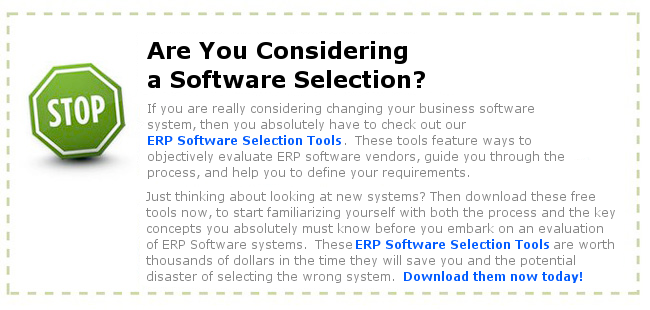Information technology has transformed the way we live and the way we do business. ERP, or Enterprise Resource Planning, is one of most widely implemented business software systems in a wide variety of industries and organizations. In this short article, well try to concisely explain the basic yet important concepts relevant to ERP.
What is ERP – ERP is the acronym of Enterprise Resource Planning. ERP definition refers to both ERP software and business strategies that implement ERP systems. ERP implementation utilizes various ERP software applications to improve the performance of organizations for 1) resource planning, 2) management control and 3) operational control. ERP software consists of multiple software modules that integrates activities across functional departments – from product planning, parts purchasing, inventory control, product distribution, to order tracking. Most ERP software systems include application modules to support common business activities – finance, accounting and human resources.
ERP Systems – ERP is much more than a piece of computer software. A ERP System includes ERP Software, Business Processes, Users and Hardware that run the ERP software. An ERP system is more than the sum of its parts or components. Those components interact together to achieve a common goal – streamline and improve organizations business processes.
History of ERP – The history of ERP has been more than 20 years. Enterprise Resource Planning (ERP) is the evolution of Manufacturing Requirements Planning (MRP) II in 1980s, while MRP is the evolution of Inventory Management & Control conceived in 1960s. ERP has expanded from coordination of manufacturing processes to the integration of enterprise-wide backend processes. In terms of technology, ERP has evolved from legacy implementation to more flexible tiered client-server architecture.
Benefits of ERP – ERP software attempts to integrate business processes across departments onto a single enterprise-wide information system. The major ERP benefits are improved coordination across functional departments and increased efficiencies of doing business. The implementation of ERP systems help facilitate day-to-day management as well. ERP software systems is originally and ambitiously designed to support resource planning portion of strategic planning. In reality, resource planning has been the weakest link in ERP practice due to the complexity of strategic planning and lack of adequate integration of ERP with Decision Support Systems (DSS).
ERP Failures – We couldnt conclude our brief guide to ERP without mentioning ERP failures. The failure of multi-million dollar ERP projects are reported once in a while even after 20 years of ERP implementation. We have identified the four components of an ERP System – 1) ERP software, 2) Business Processes that ERP software supports, 3) Users of ERP systems, and 4) Hardware and Operating Systems that run ERP applications. The failures in one or more of those four components could cause the failure of an ERP project.
Natalie Aranda writes about business and information technology.
